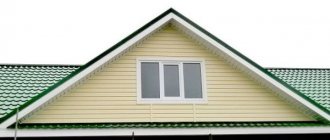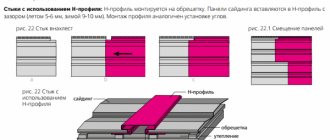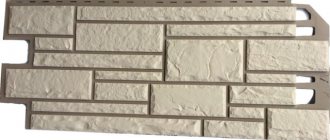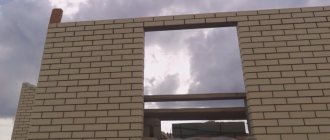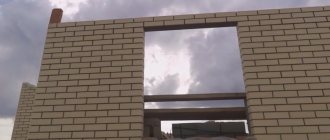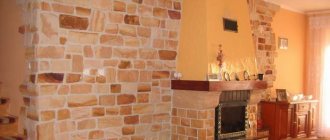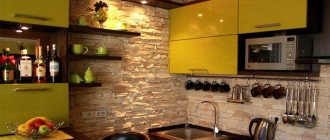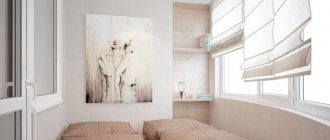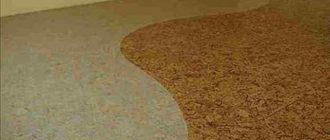OSB boards are a laminated board material made from oriented wood chips bonded with resins and synthetic substances. OSB boards of different thicknesses and sizes are available for sale. Depending on the standard size of OSB, it is used for exterior finishing and for installation and finishing of walls from inside the room. After installation, it is necessary to finish the OSB inside the house.
Kinds
Oriented strand boards are divided into 4 types based on strength and moisture resistance.
These boards consist of wood chips glued together with a single resin. OSB-1 has low moisture resistance and resistance to mechanical stress. They also cannot withstand heavy loads. OSB is used only in dry rooms protected from moisture penetration. The cost of OSB-1 is lower than others; it is rarely used due to its low characteristics. Such sheets are difficult to find in building materials warehouses.
Unlike the previous version, OSB-2 can withstand heavy loads. Their humidity index is slightly higher, but still low. The slabs are used indoors in residential premises without high air humidity. A suitable option for walls are models with a thickness of 8-12 mm. Products with a thickness of 15 mm are used for the production of furniture, for example, shelves, countertops, cabinets.
Important
OSB-2 can be used for finishing rooms with high levels of humidity if they are coated with a protective agent.
OSB is made with 2 types of resins. In the center, the shavings are connected with polyurethane glue. From the outside it is glued together with durable organic resins. OSB-3 is widely used in construction.
OSB-3 is more often used for wall finishing due to its resistance to moisture, as well as strength. It is used not only inside, but also outside the house. Models with a thickness of 22 mm are suitable for rigid roof sheathing. From them you can get strong load-bearing structures.
OSB-4 is one of the most moisture-resistant durable panels. The material can withstand loads and is used for finishing walls and cladding facades of houses. The main disadvantage is that it is expensive, so it is not widely used.
Advantages and disadvantages
Advantages of OSB boards
OSB for exterior finishing of a house has many advantages:
- Material of category 3 or 4 has sufficient moisture resistance to protect the facade of the building from rain, snow and cold.
- The slabs are homogeneous in structure and very durable, thanks to layers with different fiber orientations.
- Panels can be cut, drilled, sawed, painted, glued, etc.
- OSB holds fasteners well; you can hang furniture and equipment on the walls.
- The physical and mechanical characteristics of OSB are 2.5 times higher than those of MDF.
- MDI-based boards do not pose any health hazard. If formaldehyde resins were used for production, you need to choose a material with emission class E1.
Minuses:
- OSB belongs to the class of highly flammable substances.
- Wood shavings are susceptible to mold, so the slabs are treated with antiseptic solutions.
- The vapor permeability of OSB is low, comparable to linoleum or foam glass. A wooden house cannot be finished on the outside with this material: the dew point moves inside the wall.
The heat-retaining properties of OSB depend on the thickness of the slab.
How to choose OSB
When choosing a material, you need to pay attention to its dimensions, manufacturer, and type.
4.1 Size
For finishing, choose sheets measuring 1250x2500 mm (European standard) or 1220x2440 mm (North American standard). There are panels on the market with a length of 3000 mm and 3150 mm. The maximum length can reach 7000 mm. They are made to order. The width of the panels does not change much.
It is recommended to use large slabs. This will ensure the least number of joints after installation, which is important for finishing the walls, ceiling and floor of a frame house. The panels must cover the entire height. The thickness of the slabs is 6-25 mm, its choice depends on the expected loads, distance, type of slabs and the distance between the supports.
4.2 Manufacturers
This material is produced by many manufacturers. The most popular of them are Kronospan, GLUNZ, EGGER and Ultralam.
A fairly well-known Austrian brand that makes OSB. It has factories in many countries around the world. One of the production facilities is located in Belarus, where the materials meet European standards and are sold at affordable prices. OSB is also produced in Poland and Lithuania.
Several popular products from the manufacturer:
- Construction polished plate (9x1250x2500). It is characterized by low weight, high density, shape retention, environmental safety, and rigidity. Suitable for all construction work. Manufactured to quality standards and releases minimal amounts of formaldehyde.
- Sheet OSB-3 (15x1220x2440). The main feature is the absence of defects in the structure. It holds its shape stably, is easy to process and shows decent resistance to moisture. Environmental and fire safety are also at their best. Over time, the plate does not deform.
- OSB-3 panel (22x1220x2440). It is made from coniferous wood, turned into thin shavings, and glued with synthetic resins. The middle layer is located transversely, the upper and lower layers are located longitudinally, which increases resistance to mechanical stress. The material is quite rigid and retains its shape.
- OSB-4 board (12x1250x2500). Consists of deciduous and coniferous wood. The material is easy to process, has high vapor permeability, and a smooth surface on all sides.
A German brand that produces wooden boards from high-quality timber and environmentally friendly adhesives. The main products are OSB-3 with a low formaldehyde emission class (E0). This indicator guarantees the safety of the slabs.
Advantages of GLUNZ:
- High quality raw materials. No wood waste is used to make the boards. The product consists of softwood chips, which are dried and pressed at high temperature and pressure.
- Moisture resistant. The slabs are coated with a glossy Contiface coating, which increases moisture resistance. The swelling rate after 1 day of soaking in water is no more than 7% of slabs for the fourth type, 12% for the third, 20% for the second and 25% for the first.
- Environmental Safety. During production, safe binders are used.
- Physical properties. The material is not subject to deformation during loads, it is dense and durable.
GLUNZ has all types of panels in stock. The best among them are moisture-resistant OSB-3 with a smooth or unsanded surface, straight edges, high density, OSB 3 for increased loads with resistance to moisture, and tongue-and-groove OSB-3 with tongue-and-groove ends.
European brand of inexpensive, high-quality OSB. The products are characterized by high density and reduced hygroscopicity. It meets environmental standards E1 and E0. The brand produces OSB-2 for construction finishing works with an unsanded surface. The range also includes panels of the third type with a sanded or unsanded surface and a tongue-and-groove connecting profile on 2-4 sides.
A domestic manufacturer that produces the most environmentally friendly products with markings for various construction works. It uses new technology for the production of OSB panels, which leads to a reduction in the level of hazardous substances to 0.5 units. According to the generally accepted standard, the amount of formaldehyde should not exceed 1 unit.
Ultralam produces the third type of sheets. They are resistant to moisture and fire due to their special composition and surface treatment. The product tolerates temperature fluctuations, changes in air humidity, and is easy to process. Disadvantages include the lack of sound absorption, weight (25 kg) and the inability to make smooth edges when carving with a jigsaw.
Technology for performing work on seams.
When filling seams with any of the above traditional materials, the composition of the work and the actions performed are very similar. Carrying them out correctly provides significant time savings:
- If subsequent decoration is planned, then OSB boards are cleaned of paraffin by grinding;
- Mandatory coating with a primer with antifungal properties;
- After the primer has dried, the edges of the seams are taped with masking tape to protect the front surface of the sheets from the seal;
- The parquet varnish and primer are carefully rubbed into the gap with a spatula, and the sealant is filled into the joint using a gun;
- Use a small spatula to remove excess material that protrudes above the surface;
- After polymerization, the masking tape is removed;
- The filled seam can be sanded away from protrusions and irregularities.
You can learn about how to choose a primer and how to apply it correctly in a separate article: primer for OSB - types, application.
If the gaps exceed 5 mm, then they must be additionally reinforced with sickle tape. And, in this case, only putty is used (usually, this phenomenon is observed along the walls). If you fill the space without reinforcement, then after polymerization the composition forms cracks and spills out over time.
Sectional view of seam sealing. When finished, the mesh is not visible.
The varnish composition is mixed with sawdust to completely hide and make the cracks invisible. After drying and sanding, it is sometimes impossible to determine the location of the seam.
Installation features
When installing slabs, it is important to follow the rules. The panels are attached to the wall through the sheathing with self-tapping screws, the length of which should not be less than 25-45 mm. They are screwed in at a distance of 10-15 cm from each other. They must be at least 1 cm from the edge of the sheet.
The plates do not fit tightly together; gaps of 2-3 mm are made between them. They help prevent the slabs from deforming due to their expansion as a result of changes in the level of moisture in the room.
OSB can be installed in another way directly on the walls. To do this, drill holes in the slabs, put them in place, make holes in the wall, insert dowels and screw in self-tapping screws. If they are attached to a wood base, then they are secured with hardware without first using a hammer drill.
Why do you need painting?
OSB boards are painted for many reasons.
- Firstly, a layer of paint forms a stable, dense film on the surface, which provides additional protection from exposure to excess moisture and ultraviolet rays;
- Secondly, some coloring compositions have a fairly dense texture, which allows you to completely smooth out the uneven surface of the slabs. Not many people like the pristine appearance of this finishing material;
- Thirdly, painting is the most cost-effective way to protect and decorate the surface of OSB boards. Often this reason plays a decisive role.
Slab finishing options
OSB on the walls does not require additional finishing. However, their structure can be emphasized with varnish or stain. If necessary, the slabs can be painted or covered with wallpaper.
6.1 Use of varnish and stain
Polished slabs are finished with varnish. First, they are simply cleaned and degreased, and then covered with several layers of varnish. It is also possible to use stain - a liquid impregnation with a coloring agent. It penetrates deeply into the wood fibers, colors, and preserves its texture. Impregnation also prevents the wood from rotting.
Instructions on how to properly decorate slabs with stain:
- Dilute the liquid impregnation in water or solvent and pour into a paint sprayer. For 1 sq. m. should account for 50 g of dye.
- Apply the stain in several layers using a spray bottle, holding it at a distance of 20-25 cm from the surface. Dry each layer thoroughly.
- Cover the dried surface with polyurethane primer and then a layer of patina.
- Wait until the patina dries, then sand the surface with a sponge or sanding felt.
- Clean from dust and coat with matte or glossy varnish.
Important
The patina should only be applied over the primer. The decorative effect will be spoiled if it is applied to stain.
6.2 Painting
This finishing option is similar to the previous one. A distinctive feature is that the slabs are primed before the procedure begins. To paint the tiles, choose interior paint. It must also be suitable for a certain type of slab. It is best to use acrylic paint. Do not use water-based paint, as it may cause the product to swell.
6.3 Wallpapering
Before applying wallpaper, the slabs must be primed and puttied. Wallpaper is glued with high-quality glue. The following wallpapers are suitable for the panel:
- Paper. They are distinguished by their environmental friendliness, low price and typographic design. Not intended for rooms with high air humidity.
- Non-woven. They are a multilayer material that consists of modified cellulose fibers (70%), film-forming substances (30%) and various additives. They are easy to clean, do not absorb odors, are flexible, durable and resistant to moisture.
- Vinyl. They are made of thick paper or non-woven fabric, covered with polyvinyl chloride, and have a voluminous relief structure.
- Textile. They include rice paper, canvas, silk, non-woven covering. They belong to the premium class, are environmentally friendly, noise-absorbing, and have a long service life. They are suitable for decorating panels with slight unevenness, but quickly absorb odors, are difficult to glue and are expensive.
- Glass wallpaper. They are made on the basis of fiberglass. The composition also contains dolomite, sand and soda. The front side looks like decorative weaving. The wallpaper lasts a long time and is resistant to mechanical damage.
Important
Decorative plaster can be applied to the panels for interior work. First you need to level the surface with rough putty, then make a vapor barrier, apply a layer of glue, lay out a reinforcing mesh, reapply the glue, treat with a primer and cover with a finishing layer of plaster.
Floor Decor Ideas
If OSB panels are used as a floor covering on a concrete base or wooden flooring, then the minimum thickness of the material should be 10 mm. This size is suitable for floors that do not support heavy furniture or other structures. Otherwise, the coating thickness should be increased to 16 mm. The smooth outer surface of the oriented slab will be an excellent basis for any decorative materials when creating the interior of a country house.
- Varnish or paint. If OSB panels are chosen as the main decorative covering for the floor, it is enough to cover them with paint or varnish. To make the resulting surface monolithic, the joints between the plates are filled with sealant, and unevenness during joining is smoothed out with abrasive materials. This design will be an excellent solution for a summer residence.
- Linoleum or carpet. If it is intended to lay rolled materials on an OSB base, then it is necessary to ensure that differences do not form at the joints, which will be visible on the surface of the coating. In this case, abrasive materials are also used to smooth the floor surface, and the joints are filled with sealant.
- Tile. To lay tiles, a hard surface is required; for this reason, OSB sheets are laid on the sheathing in increments of no more than 40 cm. In this case, fasteners are placed in increments of no more than 20 cm. It is necessary to use a special adhesive composition capable of fixing ceramics to a wooden surface. Before starting facing work, the surface of the oriented slabs is impregnated with a suitable primer.
- Laminate. Laminate flooring has its own rigidity. Thanks to this, there is no need for additional surface preparation. All flaws and inconsistencies when laying OSB panels will be hidden by a layer of laminate backing.
Comparison with other materials
Plywood is a material made from thin birch sheets glued together. It is in many ways similar to OSB, but has several differences, the first of which is its low service life. Susceptible to attack by pests, which is why the OSB will last less. Other disadvantages are the high formaldehyde content and heavy weight. There are also advantages - plywood is less deformed and looks beautiful.
Fiberboard is a fibreboard for construction work. Unlike OSB, it has very low moisture resistance, wear resistance and strength. Also, fiberboard crumbles during processing or installation and looks unattractive without additional coating. The only plus is that OSB is cheaper.
Drywall is a flat sheet that consists of construction paper and a core (gypsum dough with fillers). The material is durable, environmentally friendly, and looks beautiful in appearance. Unlike OSB, it is considered fragile, subject to deformation, and cannot withstand heavy loads.
Application area
Sheathing the outside of a house with OSB boards is not the only purpose of the material. It is also used for other purposes:
- Laying the subfloor - this is how seamless floors are made; OSB is compatible with any types of insulation and waterproofing;
- continuous sheathing under the roofing - required for strong wind loads;
- finishing with OSB boards from the inside of the house - OSB-1 is used in living rooms, OSB-3 is used in the kitchen;
- the material is quite rigid, so load-bearing structures are made from it, for example, I-beams;
- removable formwork is made from OSB;
- slabs are used as a substrate in the manufacture of SIP panels.
There are also lesser-known areas of application: the production of kitchen furniture, packaging, prefabricated structures, such as the walls of summer gazebos and pavilions.
Strength characteristics of OSB
The strength characteristics of OSB boards may vary slightly depending on the manufacturer. However, there are standards that manufacturers work by and the products they produce must comply with them. Most often you can find slabs produced according to the European standard EN 300.
Mechanical properties of OSB boards according to EN 300 standard:
| Characteristics | Test method | Plate thickness, mm | OSB-1 | OSB-2 | OSB-3 | OSB-4 |
| Bending strength – major axis, N/mm2 | EN 310 | from 6 to 10 | 20 | 22 | 22 | 30 |
| > 10 and < 18 | 18 | 20 | 20 | 28 | ||
| 18 to 25 | 16 | 18 | 18 | 26 | ||
| Bending strength – lateral axis, N/mm2 | EN 310 | from 6 to 10 | 10 | 11 | 11 | 16 |
| > 10 and < 18 | 9 | 10 | 10 | 15 | ||
| 18 to 25 | 8 | 9 | 9 | 14 | ||
| Modulus of elasticity – main axis, N/mm2 | EN 310 | from 6 to 10 | 2500 | 3500 | 3500 | 4800 |
| > 10 and < 18 | ||||||
| 18 to 25 | ||||||
| Modulus of elasticity – lateral axis, N/mm2 | EN 310 | from 6 to 10 | 1200 | 1400 | 1400 | 1900 |
| > 10 and < 18 | ||||||
| 18 to 25 | ||||||
| Tensile strength perpendicular to the plane of the slab, N/mm2 | EN 319 | from 6 to 10 | 0,30 | 0,34 | 0,34 | 0,50 |
| > 10 and < 18 | 0,28 | 0,32 | 0,32 | 0,45 | ||
| 18 to 25 | 0,26 | 0,30 | 0,30 | 0,40 |
Heat transfer resistance
The heat transfer resistance of building materials is an indicator of their ability to retain heat and keep out cold. Heat transfer resistance is especially important for residential buildings. For OSB, this indicator is directly dependent on the thickness and density of the slab.
| Plate thickness, mm | Heat transfer resistance, (m2.®C/W). |
| 9,5 | 0,08 |
| 11,0 | 0,09 |
| 12,5 | 0,11 |
| 15,5 | 0,13 |
| 18,5 | 0,16 |
Biological resistance of OSB
OSB boards have sufficient biological resistance, however, with prolonged exposure to conditions of high humidity and temperature changes, the risk of damage to the material by mold fungi increases. This primarily applies to panels made from spruce or aspen chips - pine and maple chips demonstrate higher resistance to mold.
To protect OSB boards from the effects of fungi and bacteria, it is necessary to additionally use moisture-proof materials, as well as the use of paints and varnishes with protective properties.
OSB affected by mold due to negative environmental influences.

